リサーチニュース
75 ニュース
-
2025-10-14
リサーチニュース
RIKEN Research: Looking at black-hole oscillations through a mathematical lens
By applying a versatile mathematical technique to black holes, RIKEN cosmologists have uncovered new subtleties about how they vibrate. Black holes are some of the most intriguing objects in the Universe. Their gravitational pull is so strong that not even light can escape from their surfaces. Astronomers can only observe light produced indirectly by material falling into black holes. Since 2016, they have had another means of investigating black holes—gravitational waves. These are ripples created in the fabric of space–time through cataclysmic events such as the merger of two black holes. Immediately after merging, special oscillations known as quasi-normal modes are set up in the resulting black hole. “Quasi-normal modes are frequency modes that are generated when a black hole experiences some major disturbance,” explains Ryo Namba of the RIKEN Center for Interdisciplinary Theoretical and Mathematical Sciences. These vibrations emit gravitational waves after a merger. While the higher overtones of quasi-normal modes of such gravitational waves are too weak for today’s detectors, astrophysicists can study quasi-normal modes mathematically. To read more, please visit the related link.
-
2025-07-17
リサーチニュース
RIKEN NEWS: 数理・計算・情報科学領域総括に聞く―数理・計算・情報のシナジーで未来を拓く!―
理化学研究所 初田 哲男 領域総括(兼 数理創造研究センター 数理展開部門 部門長)のインタビュー記事が、理研の研究紹介ページ「クローズアップRIKEN 2025」の特集に掲載されました。 理研の強みである総合力を生かし、戦略性をより重視した効果的な運営を行うため、理研が2025年度から導入した五つの「研究領域」の仕組み。それぞれの研究領域には、国際的に卓越し、学問的にも研究運営においても極めて高い見識を有する科学者を「領域総括」として据え、高度な専門知にもとづく分野横断的な協働をうながし、「新たな知の創出」を加速します。領域総括とともに研究の推進を支えるのは推進部長たちです。 研究者と事務部門、双方の視点で、「数理・計算・情報科学領域」が目指すものを聞きました。 続きは関連リンクをご覧下さい。
-
2025-07-08
リサーチニュース
RIKEN NEWS: 若手研究者を育むECL制度の魅力
数理遺伝学理研ECL研究ユニットのシュパイデル 玲雄 理研ECL研究ユニットリーダーのインタビュー記事が、理研の研究紹介ページ「クローズアップRIKEN 2025」のトピックスに掲載されました。あわせて、同インタビューの動画も公開されています。 若手研究者に対してより手厚い支援を行うため2023年に創設された理研ECL制度(RIKEN Early Career Leaders Program)。身軽で機動性の高い研究に挑戦できるよう、これまでの理研白眉制度を拡充し、チームリーダー(部長級。大学の若手教授相当)に加え、特に経験年数が少ない気鋭の若手研究者にホスト研究センターにおいて身軽な機動性の高い研究環境を提供するユニットリーダー(課長級。大学の准教授/講師相当)を設置しました。 その第1期生である数理創造研究センター(iTHEMS)数理基礎部門 数理遺伝学 理研ECL研究ユニットで、DNAの変異からヒトの進化や歴史を解明する研究に取り組むシュパイデル 玲雄 理研ECL研究ユニットリーダーにこの制度の魅力を聞きました。 続きは関連リンクをご覧下さい。
-
2025-06-23
リサーチニュース
RIKEN NEWS: 「データオタク」が開く新たな世界
カトゥリン・ボシゥメン 副センター長のインタビュー記事が、理研の研究紹介ページ「クローズアップRIKEN 2025」のRIKEN Peopleに掲載されました。 ウイットに富んだ超高速の語り。そして笑顔。人間の魅力と可能性を感じさせる研究者である。数理創造研究センターのカトゥリン・ボシゥメン 副センター長。「ウイルス物理学」という新たな研究分野を開拓し、物理学の手法を用いて、目に見えない脅威になり得るウイルスを探究している。 続きは、関連リンクをご覧ください。
-
2025-04-14
リサーチニュース
RIKEN Research: When it comes to modeling, even unmeasurable data tells us something
Mathematical models for predicting how cancer tumors in mice grow over time can give distorted results if unmeasurable data is ignored, a team that includes two RIKEN researchers has shown1. This finding has important implications when applying mathematical models to medicine. A self-confessed data geek, Catherine Beauchemin of the RIKEN Center for Interdisciplinary Theoretical and Mathematical Sciences (iTHEMS) specializes in applying the power of math to everything from viruses to supernovae. “I love trying to figure out what data are telling us,” she says. Seeking new insights into cancer mechanisms, Beauchemin’s team used mathematical models to analyze previously published data of tumor-size measurements over time for ten mice. To read more, please visit the related link.
-
2025-04-14
リサーチニュース
RIKEN Research: Refined test could improve Parkinson’s disease diagnosis
A team that includes a RIKEN researcher has refined a lab test for measuring protein aggregate levels in samples from patients with certain neurodegenerative diseases1. This has the potential to improve diagnosis and drug development for these diseases. Synucleinopathies are neurodegenerative diseases such as Parkinson’s disease and dementia with Lewy bodies. They are associated with the accumulation of aggregates of misfolded alpha-synuclein proteins in the brain and spinal cord. “When a misfolded alpha-synuclein protein in a neuron encounters one of its properly folded counterparts, it causes it to become misfolded,” says Catherine Beauchemin of the RIKEN Center for Interdisciplinary Theoretical and Mathematical Sciences. “The two misfolded alpha-synuclein proteins stick together and cause other normal alpha-synuclein to misfold and aggregate.” To read more, please visit the related link.
-
2025-04-14
リサーチニュース
RIKEN NEWS: 量子シミュレーターで探る磁気の臨界輸送現象
関野 裕太 特別研究員のインタビュー記事が、理研の研究紹介ページ「クローズアップRIKEN 2025」の研究最前線に掲載されました。また、理研の広報誌「RIKEN NEWS」のSPRING 2025にも掲載されました。 粒子の集団である「多粒子系」の振る舞いを理論面から追究している関野 裕太 特別研究員。レーザーでつくる極微の格子(光格子)に原子を1個1個閉じ込め、その中で磁気の流れを捉える新たなモデルを考案しました。そして、そのモデルの理論計算から、不思議な磁気の輸送現象を見いだしました。 続きは、関連リンクをご覧ください。
-
2025-04-08
リサーチニュース
RIKEN NEWS:「富岳」で協力行動の進化メカニズムに迫る
村瀬 洋介 上級研究員のインタビュー記事が、理研の研究紹介ページ「クローズアップRIKEN 2025」の研究最前線に掲載されました。また、理研の広報誌「RIKEN NEWS」のSPRING 2025にも掲載されました。 社会的な動物といわれる私たち人間は、他人とも力を合わせて助け合う「協力行動」をとります。村瀬 洋介 研究員ら国際共同研究チームは、そこで重要な役割を果たす「評判」に着目しました。スーパーコンピュータ「富岳」を用いて「評判」という情報のダイナミクスを解析した結果、見えてきたのは、協力行動によって、人類が進化してきた道筋でした。 続きは、関連リンクをご覧ください。
-
2025-03-06
リサーチニュース
Review on Physics-Driven Learning for Inverse Problems Published in Nature Reviews Physics
Nature Reviews Physics recently published a review paper on ”Physics-driven learning for inverse problems in quantum chromodynamics”, from DEEP-IN working group led by Lingxiao Wang (Research Scientist, iTHEMS), including Tetsuo Hatsuda (Program Director, iTHEMS). The authors explore how combining deep learning techniques with physics-driven designs significantly improves the extraction of accurate physical properties from complex QCD phenomena. Highlighting applications such as lattice QCD calculations and studies of hadron interactions, neutron stars, and heavy-ion collisions, the review emphasizes the benefits of embedding physical priors into machine learning models and suggests broader potentials to general physics problems.
-
2024-09-10
リサーチニュース
RIKEN Research: More magic in twisted layers of graphene
Magnetic fields can engineer flat bands in twisted graphene layers to create a new playground for exotic physics, RIKEN physicists have shown. The exotic properties of graphene—a single layer of carbon atoms in a hexagonal lattice—are now well established. Electrons effectively move through graphene as if they have no mass. This is an exciting prospect for creating electronic devices with functionalities beyond those of silicon. But things get even weirder when two or more layers of graphene are combined. To read more, please visit the related link.
-
2024-09-02
リサーチニュース
RIKEN Research: The link between fuzzy images and quantum fields
Mathematical solutions to thorny quantum problems can be found more quickly by exploiting the correspondence between the statistical methods used in deep learning and techniques for implementing quantum simulations, a team led by a RIKEN researcher has shown. One of the most successful theories in modern physics, quantum field theory is physicists’ attempt to combine three theories—classical field physics, Einstein’s special relativity and quantum mechanics—into a single mathematical model. It has been successful in solving problems in particle physics and condensed-matter physics, but these calculations are computationally intensive and require a lot of computer power. To read more, please visit the related link.
-
2024-07-24
リサーチニュース文部科学省ポスター「一家に1枚」 20周年を迎え特集号が完成
文部科学省が毎年4月の科学技術週間に発行する「一家に1枚」ポスターが今年、20周年を迎えたのを記念し、サイエンスウィンドウ「一家に1枚 20周年特集号」が6月にPDF版が公開されました。1枚目の「元素周期表」から20枚目の「数理」までの全ページと、元素周期表・ヒトゲノムマップ・数理の3テーマではコラムが読めます。秋には印刷冊子が完成する見込みということです。
-
2024-03-29
リサーチニュース
RIKEN Research: How the genetic battle of the sexes plays out in species that can switch sex
A model developed by RIKEN researchers incorporates species that change sex during their life cycles for the first time1, promising new insights into genes affecting the reproductive success of males and females differently. Some genes that boost the reproductive success of females can be detrimental to that of males, and vice versa—a phenomenon dubbed ‘sexual antagonism’. Sometimes such genes can be silenced in individuals of the sex they are detrimental to. However, it may take a long time for these sexually antagonistic genes to be turned off, and so they may remain active in both sexes for generations. “Researchers have long been interested in how sexual antagonism may maintain genetic variation in populations, and whether variants favoring one sex are systematically preferred,” says Thomas Hitchcock of the RIKEN Interdisciplinary Theoretical and Mathematical Sciences. To read more, please visit the related link.
-
2023-06-12
リサーチニュース
RIKEN NEWS: 数理モデルで複雑な生態系の謎に迫る
入谷 亮介 上級研究員のインタビュー記事が、理研の研究紹介ページ「クローズアップ科学道 2023」の研究最前線に掲載されました。 自然界には、多種多様な生物が複雑に関わり合いながら進化し形づくってきたさまざまな生態系が存在します。その構造の複雑さゆえに仕組みを理解するのは至難の業。数理モデルを使って生態系を記述することで、その謎に迫ろうとしている研究者が理研にいます。数理創造プログラム(iTHEMS)の入谷 亮介 上級研究員に話を聞きました。 続きは、関連リンクをご覧ください。
-
2023-04-24
リサーチニュース
RIKEN Research: Quantum ‘magic’ could help explain the origin of spacetime
A quantum property dubbed ‘magic’ could be the key to explaining how space and time emerged, a new mathematical analysis by three RIKEN physicists suggests. It’s hard to conceive of anything more basic than the fabric of spacetime that underpins the Universe, but theoretical physicists have been questioning this assumption. “Physicists have long been fascinated about the possibility that space and time are not fundamental, but rather are derived from something deeper,” says Kanato Goto of the RIKEN Interdisciplinary Theoretical and Mathematical Sciences (iTHEMS). To read more, please visit the related link.
-
2023-04-17
リサーチニュース
RIKEN Research: Gravitational waves could indicate transition to strange quark matter
Telltale signatures in gravitational-wave signals from merging neutron stars should reveal what happens to matter at the extreme pressures generated during such mergers, calculations by RIKEN researchers predict [1]. If you took some water and compressed it with a piston, it would shrink as the molecules get pushed closer together. If you continued ramping up the pressure, you’d reach a point where the atoms collapse and form an ultra-dense soup of neutrons and protons. The only place in the Universe where this happens is neutron stars, the collapsed remnants of burned-out stars, and it produces mind-boggling densities—one teaspoon of such material weighs several hundred billion kilograms. But what would happen if you continued to increase the pressure still further? Not even astrophysicists know the answer to that. To read more, please visit the related link.
-
2023-03-15
リサーチニュース
RIKEN NEWS: 基礎科学特別研究員インタビュー② 38歳でたどり着いた数学者としての大きな第一歩
佐野 岳人 基礎科学特別研究員のインタビュー記事が、理研の研究紹介ページ「クローズアップ科学道 2023」に掲載されました。 理研には、国際的に活躍する研究者の育成を目指し、若手研究者が自ら設定した研究課題を自由な発想で主体的に研究できる「基礎科学特別研究員制度」があります。1989年に始まったこの制度は、現在公募中の2024年度採用で35回目となります。これを機に、各分野で活躍する先輩たちと現役にインタビューしました。第2回は、数理創造プログラム(iTHEMS)の佐野 岳人 基礎科学特別研究員です。 続きは、関連リンクをご覧ください。
-
2023-03-13
リサーチニュース
RIKEN Research: Explanation found for puzzling observation of Shiba states in superconductors
The origin of a mysterious experimental observation in a superconductor with a magnetic impurity sitting on top of it has been revealed in a theoretical study by a RIKEN researcher and a collaborator. This could help realize a robust quantum state residing in a superconductor that may find application in quantum computers. Superconductors conduct electricity without any resistance because electrons in them form pairs that have an energy gap. But placing a magnetic atom on top of a superconductor creates a new state in this energy gap as a result of the atom’s magnetism interacting with the superconductor’s paired electrons. Known as the Yu–Shiba–Rusinov state, or Shiba state for short, this state has been attracting a lot of interest because it could shed light on the emergence of a special state in a topological superconductor called the Majorana zero mode, which is promising for realizing fault-tolerant quantum computing. To read more, please visit the related link.
-
2023-01-04
リサーチニュース
RIKEN NEWS: パンデミックに打ち勝つオープンサイエンスの力
カトゥリン・ボシゥメン副プログラムディレクターのインタビュー記事が、「RIKEN NEWS Winter 2023」に掲載されました。 新型コロナウイルスの伝染は、感染者が非感染者を感染させることによってのみ起こります。従ってすべての感染者が家にとどまるならば、新しい感染は起こらず、流行は収束するはずです。伝染は各個人の行動に依存するため、感染を制御し、収束させるためには社会の全ての人の協力が必要になります。これが私たちが今日直面している大きな課題です。 そこで問題となるのは、誤った情報が社会に氾濫していることです。例えばワクチンを接種するかしないかを判断する場合。人は事実よりも自分自身の考えや、友人、家族の意見を信じるものです。報道機関、あるいは政府、製薬会社、科学者に対する不信感を持っている人もいます。実際、情報に欺ぎ瞞まんや誇張がないとは限らないので、常に懐疑的であることは適切で健全なことです。疑いは科学にとって必要不可欠です。これまでの考えと矛盾するデータでも拒否してはなりません。それが現在の考えが間違っていることを教えてくれるかもしれないからです。 続きは、関連リンクをご覧ください。
-
2022-08-26
リサーチニュース
RIKEN Research: Applying quantum speed limits to macroscopic systems
An expression for the maximum speed at which changes in macroscopic systems can occur has been derived by a theoretical physicist at RIKEN. This will deepen our understanding of quantum phenomena in systems that are not in equilibrium. One of the hardest aspects of quantum mechanics to grasp is the Heisenberg uncertainty principle that states that it is not possible to simultaneously pin down both the position and momentum of an object. In other words, the more precisely a particle’s position is determined, the broader the range of its possible momentum becomes (and vice versa). In 1945, two physicists, Leonid Mandelstam and Igor Tamm, focused on another type of the uncertainty relation, namely one between time and energy fluctuation, and showed that transitions in quantum systems don’t happen instantaneously; rather, the speed at which a transition occurs is capped by an amount determined by how much the energy of the system fluctuates. Many other so-called quantum speed limits have subsequently been derived, which have helped better understand the physics of quantum systems and have been useful in various quantum applications. But big problems arise when quantum speed limits are applied to macroscopic systems. “Previous quantum speed limits, which are useful for small systems, typically become meaningless for macroscopic transitions,” notes Ryusuke Hamazaki of the Nonequilibrium Quantum Statistical Mechanics RIKEN Hakubi Research Team. “For example, conventional quantum speed limits give an infinite upper bound for the speed of transitions in a gas made up of atoms.” To read more, please visit the related link.
-
2022-07-21
リサーチニュース
RIKEN NEWS: 原子も群れをつくって集団行動
ムクドリやイワシの大群が一斉に方向転換をするなど秩序だった集団行動をする姿は神秘的です。同様の現象は私たちの細胞など、より小さな世界でも確認されています。そして、さらに小さな原子の世界でも引き起こせることを、コンピュータによるシミュレーションで理論的に確認したという足立景亮基礎科学特別研究員(以下、研究員)に話を聞きました。 続きは関連リンクをご覧ください。
-
2022-06-28
リサーチニュース
RIKEN Research: Flitting between the wings of a butterfly
Just making small tweaks to certain variables could potentially modify extreme weather events such as sudden downpours, computer simula- tions by two RIKEN researchers have shown. Scientists have long desired to develop ways to control the weather. Research in this area has intensified due to climate change, which is giving rise to more extreme weather events. Present methods for modifying the weather have limited success. Seeding the atmosphere can induce rain, but only when the atmosphere is already in a state where it might rain. Geoen- gineering projects have been envisioned, but they have yet to be conducted due to concerns about unpredicted long-term effects. As a promising approach, Takemasa Miyoshi and Qiwen Sun, both of the RIKEN Center for Computational Science, have looked to chaos theory to assess the possibility of mitigating weather events such as torrential rain by making small changes. Instead of con- sidering the weather system in all its complexity, they focused on a far simpler system—the butterfly attractor. To read more, please see related links.
-
2022-06-28
リサーチニュース
RIKEN Research: Worming out of the black-hole information paradox
RIKEN physicist and two colleagues have found that a wormhole—a theoretical bridge connecting distant regions of the Universe—may help to shed light on the mystery of what happens to information about matter consumed by black holes. Einstein’s theory of general relativity predicts that nothing that falls into a black hole can escape its clutches. But in the 1970s, Stephen Hawking calculated that black holes should emit radiation when quantum mechanics, the theory governing the microscopic realm, is considered. “This is called black hole evaporation because the black hole shrinks, just like an evaporating water droplet,” explains Kanato Goto of the RIKEN Interdisciplinary Theoretical and Mathematical Sciences. To read more, please see related links.
-
2022-04-25
リサーチニュース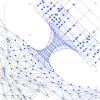
RIKEN Research: Quantum computing and deep learning could help solve the mysteries of quantum gravity
RIKEN physicists have put quantum computing and deep learning through their paces and found that they are powerful tools for gleaning insights into new theories of quantum gravity [1]. They could thus help solve one of the most formidable challenges in modern physics—developing a theory of gravity that jives with quantum physics. When Einstein nutted out his theory of general relativity in 1915, his only tools were pen and paper. The same was true of the pioneers of quantum theory. But the next major breakthrough in theoretical physics could be made with help from emerging technologies such as quantum computers and machine learning, Enrico Rinaldi of RIKEN Theoretical Quantum Physics Laboratory thinks. “I believe these technologies are poised to transform the way we do theoretical physics,” he says. To read more, please visit the related link.
-
2022-04-08
リサーチニュース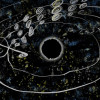
RIKEN Research: Ringing black holes could put general relativity to the test
Typical overtone chords in the gravitational waves produced when black holes collide could be used to test general relativity, a mathematical analysis by a RIKEN physicist has shown [1]. When black holes merge, they generate gravitational waves, which ripple outward like sound waves from a ringing bell. In theory, these gravitational waves can be broken down into tones and overtones—like in music—based on their different frequencies and the rate at which they dampen and die out. But in practice, gravitational-wave detectors are not yet sensitive enough to definitively pick up the overtones. However, cosmologists are keen to measure the precise oscillation pattern because it can tell them more about a black hole’s properties. In particular, the mass of the black hole and the rate at which it is spinning can be calculated from the damping rate and frequency. “It’s like when you hear an instrument, you can understand if it is a guitar or a piano,” says Naritaka Oshita of the RIKEN Interdisciplinary Theoretical and Mathematical Sciences Program (iTHEMS). To read more, please visit the related link.
-
2022-04-06
リサーチニュース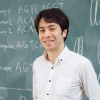
The Horse: Breeding Mares Early in Life Might Lead to Early Fertility Decline
Jeffrey Fawcett (Senior Research Scientist, iTHEMS) and his research was featured in an article in The Horse. If you want to breed an older mare, you might consider how old she was when she was first bred. According to a new study in Japanese racehorses, broodmare fertility appears to decrease slowly over the years, on a downhill slope that follows her number of breeding years—and not just her age. “Our results suggest that the fertility of a mare is the highest at (her) first year breeding and gradually declines every year,” said Jeffrey Fawcett, PhD, a biologist and senior research scientist at RIKEN Interdisciplinary Theoretical and Mathematical Sciences Program (iTHEMS), in Saitama, Japan. To read more, please visit the related link.
-
2022-04-06
リサーチニュース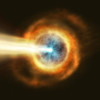
RIKEN Research: Thermal electrons play key role in determining emissions from gamma-ray-burst afterglows
he presence of unusually energetic gamma rays seen in some afterglows from intense gamma-ray bursts (GRBs) could be explained by a new mathematical model developed by RIKEN researchers1. This finding could help to shed light on the origin of GRBs. A GRB is a spectacular eruption of energy produced by violent events such as the explosive death of a massive star, or the collision of two neutron stars. A GRB also shoots a jet of matter and energy into the material that surrounded the star, shocking particles such as protons and electrons and causing them to emit radiation. The emitted photons, ranging from radio waves to gamma rays, can be detected from Earth as a GRB afterglow. The vast majority of GRB afterglow observations can be explained by current theories, which should come as no surprise: they wouldn’t be the current theories if they didn’t match reality. But the afterglows of two recent GRBs produced gamma rays with unusually high energies that strain these theories. “The surprise with these two bursts was that we had never detected photons this energetic before,” says Donald Warren of the RIKEN Interdisciplinary Theoretical and Mathematical Sciences Program (iTHEMS). To read more, please visit the related link.
-
2022-02-14
リサーチニュース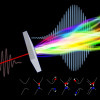
RIKEN Research: Modeling high-harmonic generation without resorting to perturbation theory
An advanced mathematical model that can describe high-energy interactions between light and matter has been developed by two RIKEN researchers and a collaborator [1]. The approach could be extended to offer new insights in other areas of physics. High-harmonic generation is a powerful technique that converts laser light from one wavelength, or color, to another. Put simply, it converts a low-energy, long-wavelength photon into multiple higher energy, shorter wavelength photons. High-harmonic generation has several applications. For example, it offers a way to create table-top sources of extreme ultraviolet or x-ray light using lasers, rather than expensive synchrotron facilities. High-harmonic generation can also produce ultrashort light pulses, as short as one attosecond ($10^{-18}$ second) or maybe even one zeptosecond ($10^{-21}$ second), which are useful for imaging extremely rapid processes such as those that occur in atoms. But high-harmonic generation is inherently difficult to model mathematically, and thus understand fully. Now, Hidetoshi Taya and Masaru Hongo from the RIKEN Interdisciplinary Theoretical and Mathematical Sciences (iTHEMS) Program, together with their colleague Tatsuhiko Ikeda from the University of Tokyo, have developed an analytical approach to high-harmonic generation in the so-called non-perturbative regime for the first time. To read more, please visit the related link.
-
2022-01-14
リサーチニュース
RIKEN NEWS: ゲノム情報に隠された進化の法則を探る
ジェフリ・フォーセット上級研究員のインタビュー記事が、理研の研究紹介ページ「クローズアップ科学道 2022」に掲載されました。 地球上に生命が誕生して約40憶年。長い年月を経て生物は多種多様に進化してきました。これはゲノムの進化の歴史でもあります。種ごとの違いはどのようにして生じてきたのか、ジェフリ・フォーセット上級研究員(以下、研究員)は、数理科学のアプローチを取り入れながらこの謎の解明に挑戦しています。 続きは、関連リンクをご覧ください。
-
2021-12-13
リサーチニュース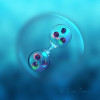
RIKEN Research: Exotic six-quark particle predicted by supercomputers
Dr. Takuya Sugiura (Postdoctoral Researcher, iTHEMS) was featured in the Research News on the RIKEN website. The predicted existence of an exotic particle made up of six elementary particles known as quarks by RIKEN researchers could deepen our understanding of how quarks combine to form the nuclei of atoms. To read more, please see the related links.
-
2021-07-29
リサーチニュース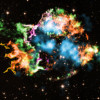
RIKEN Research: Smoking-gun evidence for neutrinos’ role in supernova explosions
Supernova explosions are sustained by neutrinos from neutron stars, a new observation suggests. Shigehiro Nagataki (Deputy Program Director, iTHEMS) were interviewed in the article.
-
2021-07-27
リサーチニュース
広報誌 RIKEN 2021にiTHEMSの研究活動や研究員が掲載されました
広報誌 RIKEN 2021の複数の記事にiTHEMSの研究と研究員が掲載されました。 p.8-9: 蒸発するブラックホールの内部を理論的に記述し、その正体に迫る(横倉 祐貴) p.10-11: 扉イメージ(ドン・ウォレン) p.20-21: 数理モデルで生物学の謎に挑む(iTHEMS生物学セミナースタディーグループ)
-
2021-06-28
リサーチニュース
RIKEN Research: Physics modeling of viral spread between cells
Prof. Catherine Beauchemin (Deputy Program Director, iTHEMS) was featured in the summer issue of RIKEN RESEARCH 2021. Describe your role at RIKEN - I first joined RIKEN in 2016 as a senior visiting scientist at iTHES, the predecessor of the Interdisciplinary Theoretical and Mathematical Sciences (iTHEMS) program. In 2020, I became one of four iTHEMS deputy program directors. I am in a field I call ‘virophysics’; the application of physics methods to virology. Primarily, I construct computer and mathematical models to explain the experimental observations made when viruses infect cell cultures. In biology, such knowledge is usually advanced through experimental trial and error, but physics modeling can help streamline this process. To read more, please see the related links.
-
2021-06-25
リサーチニュース
RIKEN NEWS: 基礎研究の意義はどこにあるのか
初田哲男プログラムディレクターのインタビュー記事が、理研の研究紹介ページ「クローズアップ科学道」と「RIKEN NEWS Summer 2021」に掲載されました。 宇宙はどのように誕生したのか。物質はなぜその物質であり続けるのか。生命の源はどこにあるのか。根本的な問いを追求する基礎研究は、成果が出てもすぐに具体的な実用化につながることが少なく、はたから見ると何をやっているのかよくわからない部分があります。基礎研究とは、いったいどんなことをしているのか、数理創造プログラム(iTHEMS)の初田哲男プログラムディレクター(PD)に聞きました。 続きは、関連リンクをご覧ください。
-
2021-04-02
リサーチニュース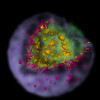
RIKEN Research: Supernova simulations reveal how stellar explosions shape debris clouds
Astronomers are now in a better position to interpret observations of supernova remnants thanks to computer simulations of these cataclysmic events by RIKEN astrophysicists.
-
2021-03-01
リサーチニュース
RIKEN Research: Supernova had a missing companion star
The massive star that exploded to form the supernova known as Cassiopeia A most likely had a companion star that has yet to be spotted, a spectro-scopic analysis by RIKEN astro-physicists suggests.
-
2021-03-01
リサーチニュース
RIKEN Research: RIKEN and JAXA collaborate on real-time rainfall forecasts
Researchers from RIKEN, Chiba Univer-sity, the University of Tokyo and the Japan Aerospace Exploration Agency (JAXA) have used a combination of satellite data and supercomputer simulations to offer five-day rainfall forecasts over the Internet covering the globe. Dr. Takemasa Miyoshi (iTHEMS/R-CCS) commented in the article.
-
2021-02-08
リサーチニュース
RIKEN NEWS: 宇宙の物質進化を追う ─ 原子核から原子・分子へ
理研内で「宇宙における物質進化 ─ 原子核・原子・分子・その先へ」と題したプロジェクトが2019年度から5年計画で進行している。開拓研究本部の坂井星・惑星形成研究室、玉川高エネルギー宇宙物理研究室、長瀧天体ビッグバン研究室が核となり、理研内外の研究者が集結。物理と化学が融合した新しい宇宙研究を実現し、原子核から原子、分子へと至る物質進化をつなげて理解することを目指す。
-
2021-01-13
リサーチニュース
RIKEN NEWS: 30秒ごとに更新するゲリラ豪雨予報
局所的・突発的に猛烈な雨が降り、冠水や停電を引き起こすなど、日常生活を脅かすゲリラ豪雨が社会問題化して久しい。しかし、現在の天気予報の技術では、ゲリラ豪雨の発生を予測できない。計算科学研究センターデータ同化研究チームの三好建正チームリーダー(TL)は、30秒ごとに観測データを取り込んで更新する革新的な天気予報手法を開発し、ゲリラ豪雨予報を実現しようとしている。
-
2020-11-13
リサーチニュース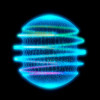
Dark-matter candidate could display stringy effects in the lab
-Calculations show how theoretical ‘axionic strings’ could create odd behavior if produced in exotic materials in the lab- A hypothetical particle that could solve one of the biggest puzzles in cosmology just got a little less mysterious. A RIKEN physicist and two colleagues have revealed the mathematical underpinnings that could explain how so-called axions might generate string-like entities that create a strange voltage in lab materials[1].
-
2020-09-07
リサーチニュース
RIKEN NEWS: 優駿の生産を夢見て
The article written by Dr. Jeffrey Fawcett, Senior Research Scientist, was published in this month's RIKEN News. He wrote about the genetics of Thoroughbred horses and his research using genomic data of Japanese Thoroughbreds.
-
2020-09-02
リサーチニュース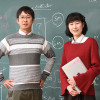
Dr. Nagisa Hiroshima and Dr. Yoshiyuki Inoue were highlighted in an article of RIKEN 2020 about Dark Matter Search
It is our great pleasure to inform you that our iTHEMS colleagues, Nagisa Hiroshima and Yoshiyuki Inoue, are highlighted in RIKEN Annual Report 2020 for their leading role in organizing the iTHEMS "Dark Matter Working Group". This working group aims at creating a new domestic and international network of theoretical and experimental physicists who are interested in dark matter search.
-
2020-06-26
リサーチニュース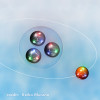
RIKEN Research: Light nucleus predicted to be stable despite having two strange quarks
Adding an exotic particle known as a Xi hyperon to a helium nucleus with three nucleons could produce a nucleus that is temporarily stable, calculations by RIKEN nuclear physicists have predicted1. This result will help experimentalists search for the nucleus and provide insights into both nuclear physics and the structure of neutron stars.
-
2020-06-26
リサーチニュース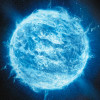
RIKEN Research: Modeling the insides of a neutron star
Astrophysicists at RIKEN have developed an improved model for the interior structure of neutron stars. It agrees well with obser-vations, and, unlike previous models, it can be extended to consider what happens when two neutron stars merge.Neutron stars are incred-ibly dense, being the size of a medium asteroid but having masses similar to that of the Sun. They have an onion-like structure, which theorists have been trying to model. To read more, please see the related link.
-
2020-06-26
リサーチニュース
"Minute-to-minute weather prediction" article on RIKEN RESEARCH by Takemasa Miyoshi
Deputy Program Director at iTHEMS Dr. Takemasa Miyoshi talks about weather simulation using a supercomputer "Fugaku".
-
2020-06-25
リサーチニュース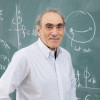
A Black Hole’s Lunch Provides a Treat for Astronomers
iTHEMS Senior visiting scientist, Gordon Baym, gave a comment on GW190814 in New York Times.
-
2020-06-25
リサーチニュース
Is interdisciplinary research really the best way to tackle global challenges?
In this magazine article, various researchers include Dr. Tetsuo Hatsuda advocate for issues and opinions about interdisciplinary research. Please read it at the related link.
-
2020-06-25
リサーチニュース
Neutron star particles go under the LHC microscope
This article form Symmetry contains an interview with Dr. Tetsuo Hatsuda, Program Director at iTHEMS . Please enjoy.
-
2020-05-18
リサーチニュース
Mesoscopic spin transport between strongly interacting Fermi gases
Understanding of physical properties for quantum many-body systems with strong interparticle interactions is one of key issues common to various subfields of physics. Such systems range from high-Tc superconductors in solid-state physics to neutron star interiors in nuclear physics. Among these systems, ultracold atoms are very pure atomic gases whose interactions can be tuned by optical and/or magnetic fields. The ultracold atoms thus provide an ideal platform to simulate the strongly interacting systems. Recently, quantum transport of ultracold atoms have been actively investigated in order to clarify how strong interactions affect their nonequilibrium properties. Motivated by this experimental situation, we theoretically study spin transport for strongly interacting Fermi gases in two-terminal setup where the gases in left and right reservoirs are connected via a narrow construction (see Figure). In particular, the spin current for normal Fermi gases in two situations are focused on. The first situation is the pseudogap region, where both gases have small spin polarizations and are above the superfluid transition temperature. In this case, spin-up and spin-down fermions in each reservoir prefer to form pairs (so-called preformed Cooper pairs) due to the strong attractive interaction. Because of this pairing effect, the spin degrees of freedom tend to be frozen and thus the spin current is largely suppressed. The other situation is a region where the gases in the left and right reservoirs have large spin polarizations with opposite sign. In this case, minority-spin particles behave as the “Fermi polarons,” which are quasiparticles consisting of minority-spin particles dressed by majority-spin ones. The appearance of the Fermi polarons results in the increase of the minority densities of states, leading to the enhancement of the spin current. Our results suggest that the spin transport measurement becomes a sensitive probe to experimentally examine pseudogap and polaron phenomena, which have attracted much attention not only in atomic physics but also in solid-state physics.
-
2020-03-19
リサーチニュース
RIKEN Research: Merger between two stars led to iconic supernova -- Simulations suggest that two stars came together to form a blue supergiant, which subsequently exploded
A supernova in a nearby galaxy may have originated from an explosion of a blue supergiant formed by the merger of two stars, simulations by RIKEN astrophysicists suggest1. The asymmetric nature of this explosion may provide hints for where to look for the elusive neutron star birthed in this stellar cataclysm. A core-collapse supernova occurs when the core of a massive star can no longer withstand its own gravity. The core collapses in on itself, triggering a violent explosion that blasts away the star’s outer layers, leaving behind a neutron star or black hole. In 1987, astronomers saw a star explode in the Large Magellanic Cloud, one of our galaxy’s closest neighbors. Since then, scientists have intensively studied the aftermath of this supernova, known as SN 1987A, to understand the nature of the progenitor star and its fate. The progenitor of this type of supernova is usually a red supergiant, but observations have shown that SN 1987A was caused by a compact blue supergiant. “It has been a mystery why the progenitor star was a blue supergiant,” says Masaomi Ono at the RIKEN Astrophysical Big Bang Laboratory.
75 ニュース
